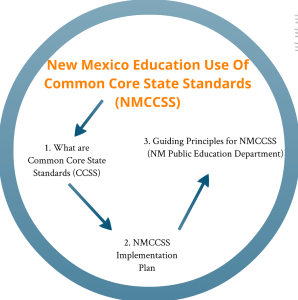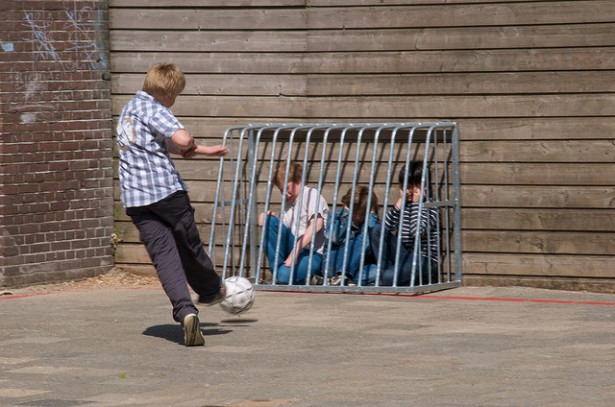Preschoolers who stutter do just fine socially, new study shows
When parents hear their 3- or 4-year-old struggle with stuttering, many can’t help imagining all the ways it will cause them anxiety, especially when they enter preschool: they’ll be teased, have trouble making friends or be afraid to speak up.
But a new Australian study, published Monday in the journal Pediatrics, suggests that it’s fairly common for preschool-age children to stutter – and those that do tend to do just fine, both emotionally and socially.
The researchers have been following more than 1,600 children from Melbourne, Australia, since they were eight months old. In this new report, they found 11 percent of those children had started stuttering by age 4, suggesting that a stutter isn’t abnormal for this age group.
“We will continue to follow the children to learn more about how many recover form stuttering with and without intervention,” says Sheena Reilly, the study’s lead author. Reilly is the director of speech pathology at the University of Melbourne. “We particularly want to be able to predict which children will continue to stutter so that we can target earlier and better intervention at those children. Understanding when anxiety, a feature commonly reported in adolescents and adults who stutter, becomes apparent is another area we will continue to research.”
But in the current study, compared to their non-stuttering peers, the children who stuttered were similar in both temperament and social-emotional development. That’s some encouraging news for parents who may be worried about sending their stuttering child to preschool this fall.
Elizabeth Campbell, the mom of a former tiny stutterer, remembers her similar anxieties well. Her son, Xavier, started to stutter when he was 2 years old. At that young age, the other kids in his day care were too little to notice or bother him about it. But Campbell started to imagine his future with a speech impediment.
“I think a lot of it is, the worry is, what if it doesn’t go away? What if my child becomes school age and they’re 6, 7, 8 – or even 12, 13, 14 — and they’re still stuttering?” says Campbell, who lives with Xavier, her husband and their 3-year-old son in Pennsylvania.
By the time Xavier was 2 1/2 , he’d noticed his own struggles with speaking, and started to become frustrated with it.
“It got to the point where he would be upset by it,” Campbell says. “He would be stuttering and then he would stop and say, ‘HELP, Mommy!’”
For many young children, the stutter may go away on its own. But experts say that when the child starts to be bothered by his or her own stutter, like Xavier did, that’s when it’s time to consider contacting a speech therapist. Xavier started working with one as a very little guy, at 2 1/2 years old. Shortly after his third birthday, he had his last real struggle with stuttering. He’s 7 now, and the stutter is gone, his mom says.
Anywhere from 5 percent to 12 percent of kids will go through a period of stuttering, says Ellen Kelly, Ph.D., an associate professor of hearing and speech sciences at Vanderbilt University in Nashville. “But we know from past research that 80 percent of those kids are going to recover,” she says, adding that a small percentage of those kids will have chronic stutters that may persist into their teens, or even adulthood. “Those are the people we want to find, and help early,” she says.
Because preschool-age is the optimal time for speech therapy, says Bridget Walsh, a research scientist at the Purdue Stuttering Project at Purdue University. “The brain is still undergoing a staggering amount of development. It’s malleable. This is a critical window, when connections are being formed,” she says.
Experts name a few things parents can look for that may signal their kid may benefit from speech therapy: The stuttering has been happening for more than six months, and it’s occurring more frequently. Another sign may be if the child is physically straining when speaking, almost forcing the words out. He or she might also avoid talking, or substitute words – something little Xavier would do, his mom noticed. When trying to ask for a balloon, for example, Campbell says, “He would say, ‘Give me that b-b-b-b—gimme dat!”
It’s important for parents to remember that stuttering is a neurological disorder, experts say, and so barking orders at a stuttering child to “slow down!” or “take a breath!” is not ultimately very helpful. Instead of telling them to slow down, for example, slow your own speech down, and the child will follow suit. Also: Don’t bombard the child with questions. Keep your full attention on the child when he or she is speaking, including eye contact. And build their confidence with very descriptive praise.
All this advice, experts point out, isn’t just good for stuttering children – it’s good advice for dealing with any child.
“It’s kind of why Mr. Rogers used that slow, slow pace,” says Jane Fraser, president of the Stuttering Foundation of America. “The message it sends is, ‘We’re not in a hurry; we have time to listen.’
She adds, “Parents don’t cause stuttering. But there’s a lot you can do to pull the pressure off.”
Fraser and other experts we spoke to for this story suggest that parents who are concerned about their child’s stuttering start studying up about the speech problem the way we research anything else these days: the Internet. Here are a few reputable sources to try first, many of which can help connect you with speech therapy options in your state:
The American Speech and Language Foundation


